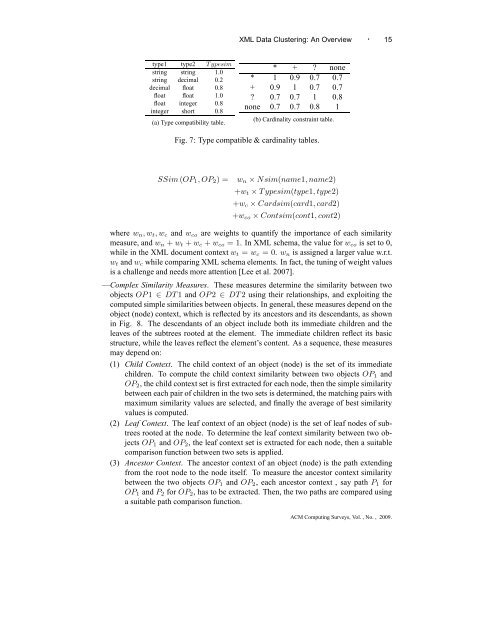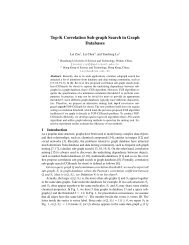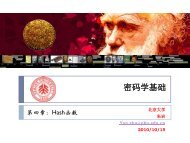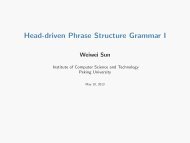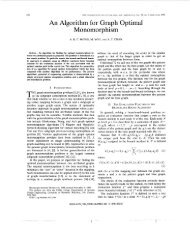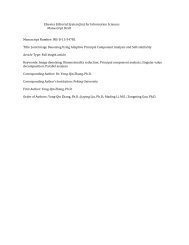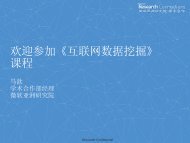PDF (1MB) - QUT ePrints
PDF (1MB) - QUT ePrints
PDF (1MB) - QUT ePrints
Create successful ePaper yourself
Turn your PDF publications into a flip-book with our unique Google optimized e-Paper software.
XML Data Clustering: An Overview · 15<br />
type1 type2 Typesim<br />
string string 1.0<br />
string decimal 0.2<br />
decimal float 0.8<br />
float float 1.0<br />
float integer 0.8<br />
integer short 0.8<br />
(a) Type compatibility table.<br />
* + none<br />
* 1 0.9 0.7 0.7<br />
+ 0.9 1 0.7 0.7<br />
0.7 0.7 1 0.8<br />
none 0.7 0.7 0.8 1<br />
(b) Cardinality constraint table.<br />
Fig. 7: Type compatible & cardinality tables.<br />
SSim (OP 1 , OP 2 ) =<br />
w n × Nsim(name1, name2)<br />
+w t × Typesim(type1, type2)<br />
+w c × Cardsim(card1, card2)<br />
+w co × Contsim(cont1, cont2)<br />
where w n , w t , w c and w co are weights to quantify the importance of each similarity<br />
measure, and w n + w t + w c + w co = 1. In XML schema, the value for w co is set to 0,<br />
while in the XML document context w t = w c = 0. w n is assigned a larger value w.r.t.<br />
w t and w c while comparing XML schema elements. In fact, the tuning of weight values<br />
is a challenge and needs more attention [Lee et al. 2007].<br />
—Complex Similarity Measures. These measures determine the similarity between two<br />
objects OP1 ∈ DT1 and OP2 ∈ DT2 using their relationships, and exploiting the<br />
computed simple similarities between objects. In general, these measures depend on the<br />
object (node) context, which is reflected by its ancestors and its descendants, as shown<br />
in Fig. 8. The descendants of an object include both its immediate children and the<br />
leaves of the subtrees rooted at the element. The immediate children reflect its basic<br />
structure, while the leaves reflect the element’s content. As a sequence, these measures<br />
may depend on:<br />
(1) Child Context. The child context of an object (node) is the set of its immediate<br />
children. To compute the child context similarity between two objects OP 1 and<br />
OP 2 , the child context set is first extracted for each node, then the simple similarity<br />
between each pair of children in the two sets is determined, the matching pairs with<br />
maximum similarity values are selected, and finally the average of best similarity<br />
values is computed.<br />
(2) Leaf Context. The leaf context of an object (node) is the set of leaf nodes of subtrees<br />
rooted at the node. To determine the leaf context similarity between two objects<br />
OP 1 and OP 2 , the leaf context set is extracted for each node, then a suitable<br />
comparison function between two sets is applied.<br />
(3) Ancestor Context. The ancestor context of an object (node) is the path extending<br />
from the root node to the node itself. To measure the ancestor context similarity<br />
between the two objects OP 1 and OP 2 , each ancestor context , say path P 1 for<br />
OP 1 and P 2 for OP 2 , has to be extracted. Then, the two paths are compared using<br />
a suitable path comparison function.<br />
ACM Computing Surveys, Vol. , No. , 2009.


